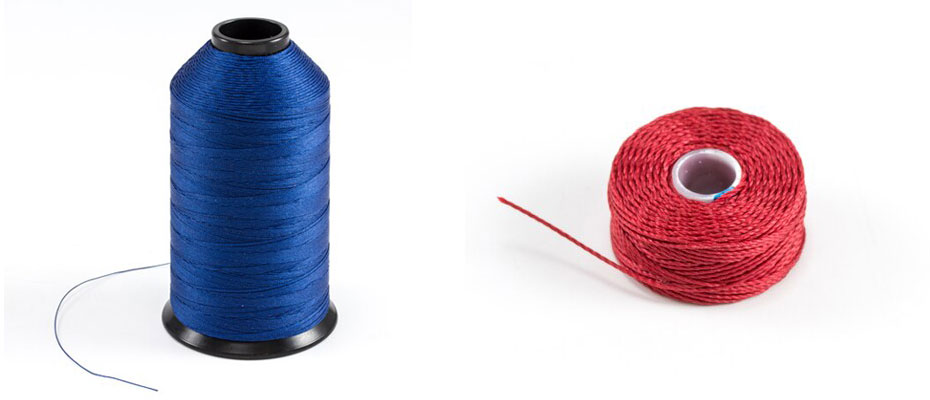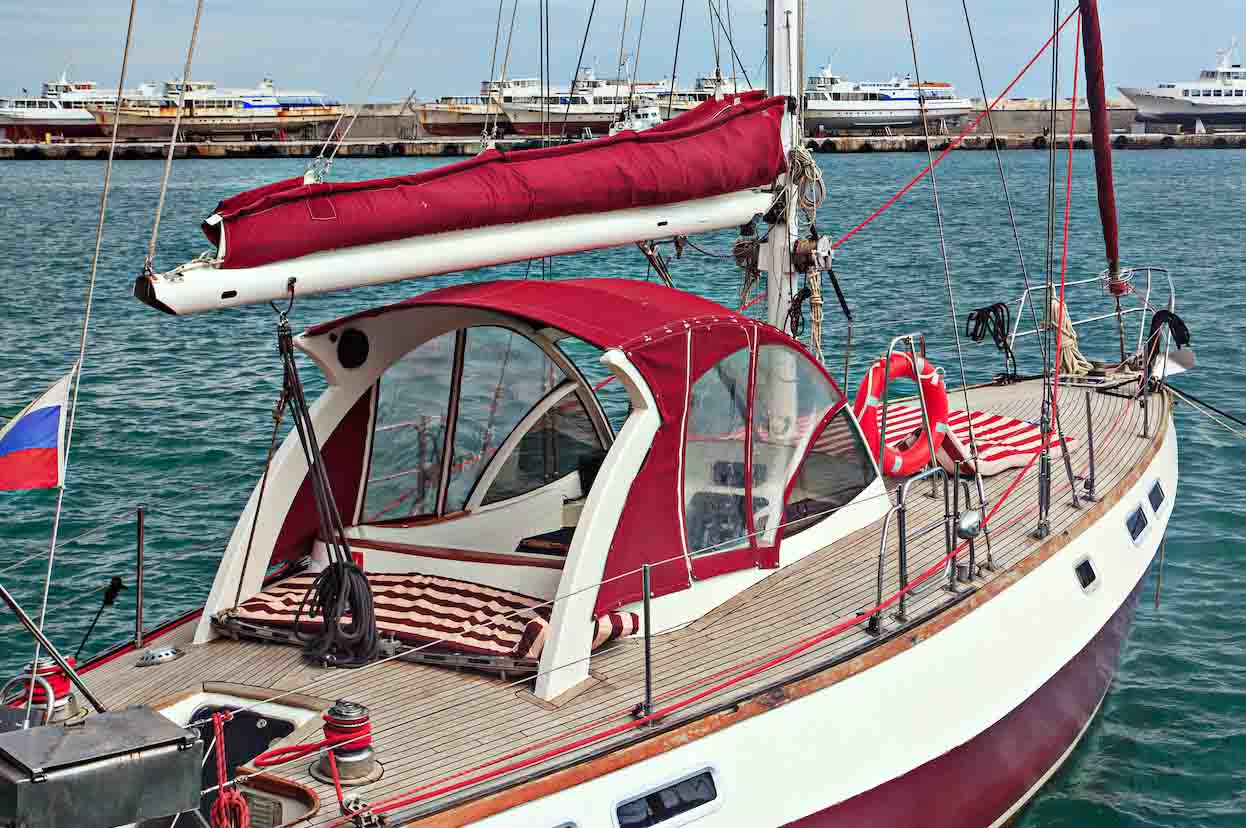what is the best thread for a high-speed 430 sewing machine to use in the bottom
Choosing the Right Thread: The Best Sewing Threads for Heavy-Duty Applications
Introduction to Thread
Picking the right ptfe sewing thread tin speed up your sewing process, prevent reworking of seams, and go along your customers happy. Outdoor, industrial, and commercial applications require high-quality, heavy-weight, and heavy-duty threads that last.
Read on for a rundown of diverse thread types and their recommended uses in these markets to determine the best quality thread for your projection.
Interested in becoming a Trivantage customer?
Find out more well-nigh us to see if we're right for you.
Types of threads used for industrial sewing projects
- PTFE (polytetrafluoroethylene) and ePTFE (expanded PTFE) are potent thermoplastic polymers
- Both are flexible and resistant to chemicals, UV rays, and friction
- Excellent industrial threads that outlast the balance (a good choice for heavy fabrics)
- Carry lifetime warranties
- Recommended for employ with HDPE shade fabrics
- PTFE threads are more expensive but last the longest
- Polyester thread is UV resistant and h2o repellent, making it an ideal outdoor thread
- Highly durable with low stretch
- Not bad for nearly industrial applications
- Be careful with dyed polyester thread as the pigment can transfer to vinyl surfaces
- Flexible with an excellent strength-to-size ratio
- Recommended for apply in fabric that is not exposed to the elements
- A skillful indoor upholstery thread (not recommended for outdoor apply)
- A naturally stiff thread
- Grips to the fabric and swells when wet to prevent seam leakage
- A good general-purpose thread
Construction

- Continuous filament: A long, continuous strand of a manufactured cobweb.
- Monocord or monofilament: A single-ply thread that is smooth, flat, and ribbon-like (like fishing line). Having no to little twist allows it to work on both sides of a double-needle machine.
- Spun or twisted: Multiple fibers twisted together (typically in 2-ply or iii-ply options).
- Left twist: A "Z" twist or twist in a clockwise direction. Most of our thread is left twist unless otherwise noted. On a double needle machine, left twist thread goes on the correct-side needle.
- Right twist: An "Southward" twist or twist in a counterclockwise position. Our thread will be noted if available in a right twist. On a double needle auto, right twist thread goes on the left-side needle.
Common Features
- A bonded terminate is practical to the fibers of a continuous filament thread for college strength and decreased friction.
- A soft finish means the thread has no fiber coating.
- Lubricated thread allows for smooth sewing and needle rut resistance.
- Thread that is UV resistant withstands fading and sun damage.
- To shed water, a non-wicking or anti-wicking end is applied to the thread (non-wicking repels water and prevents water absorption while anti-wicking provides an extremely water-repellent seam).
- Thread that is heat fix minimizes shrinking and expanding.
- The elongation is the amount a thread stretches before it breaks. The higher elongation, the greater seam elasticity but at that place is more opportunity for skipped stitches and thread breakage.
Applications

- Shade (awnings, shade sails, enclosures, umbrellas)
- Marine products (seating, boat tops, sails, covers)
- Outdoor upholstery (patio furniture, cushions, umbrellas, furniture covers)
- Indoor upholstery (sofas, pillows, curtain, quilting)
- Tents and tarps, industrial covers
- Signs and banners
- Recreational gear
- Wearing apparel
- Embroidery
- Full general industrial projects using heavyweight fabrics
Brand highlights

- Fil-Tec™
- >PremoBond
- Bonded, continuous multifilament polyester
- 30% stronger than industry standard
- Bachelor in thread and bobbins
- Keen for marine projects, awnings, filtration, footwear, luggage, geotextiles, tarps, and slings
- > Aruvo®
- Twisted PTFE
- Limited lifetime warranty
- Bachelor in thread and bobbins
- Nifty for marine fabric, awnings, upholstery, and shade sails
- >Premofast™
- Bonded low-twist multifilament polyester
- Cleans and protects against bully and yellowing
- Available in thread and bobbins
- Great for marine material, awnings, upholstery, and shade sails
- >Aqua-Seal™
- Bonded microcord polyester
- Fills the needle holes when wet to forbid seam leakage
- Use on vinyl, acrylic, and more than
- GORE®
- >TENARA®
- Multifilament ePTFE
- A heavy-duty option for awnings, marine, shade structures/sails, and industrial apply
- Comes in three styles (Tenara, TR, HTR)
- Groovy for awnings, marine apply, tarps, and article of furniture
- A&Due east
- >SunStop®
- Twisted multifilament polyester
- Anti-wicking and UV resistant
- Available in thread and bobbins
- Great for awnings, tents, and marine fabric
- >Poly Nu Bond™
- Twisted, continuous filament, high-tenacity polyester
- Non-wicking and resists bacteria, mildew, abrasion, and chemicals
- Available in thread and bobbins
- Nifty for tents, awnings, and outdoor upholstery
- Coats®
- >Ultra Dee®
- Continuous filament bonded polyester
- 20-33% higher maintained force than standard lubricated threads and heat gear up
- Available in thread and bobbins
- Swell for luggage, furniture, awnings, seat trims, and marine cloth
- >Polymatic
- Bonded monocord Dacron
- Ideal for zigzag sewing and can be used on both sides of a double-needle car
- Bachelor in thread and bobbins
- Keen for light boat tops, outdoor fabric, and multi-head embroidery
- >Dabond
- Bonded, twisted, continuous filament polyester
- Resists UV rays, mildew, rot, and bleach
- Available in standard Dabond pre-wound bobbins and Dabond Nano thread (features an anti-wick cease to reduce seam leakage)
- Neat for awnings, sails, and tie downs
Finding the best thread for mutual problems & solutions
- Colors fading or bleeding into the fabric?
Find a thread that's solution-dyed, treated for UV resistance, bonded, or anti-wicking. These volition help defend confronting dominicus and moisture to proceed the colour in the thread, even in marine conditions.
- Needle heat from your sewing machine?
Use a thread that'south lubricated or peculiarly engineered for high heat and high-speed machine sewing.
- Fraying or breaking?
Fraying typically occurs when there are burs on the sewing machine needle. Breaking typically occurs either nether fraying or because the tension is wrong. Fraying and breaking can also occur from the needle getting likewise hot in high-speed sewing machines – merely this is highly unlikely with a lubricated thread.
- Thread retaining water? Leaky seams?
Choose an anti-wicking, swelling (swellable), or monocord threads that fill up the seams when wet to prevent leakage. Aqua-Seal is 1 of the leading swellable threads on the market.
- Shrinking, expanding, or warping thread?
Select a thread that's heat set to minimize shrinking and expanding.
- Deterioration from mold, mildew, or chemicals?
Lubricated, coated, or bonded threads defend confronting these external factors.
- Untwisting, raveling, or knotting thread?
Monofilament thread provides one compatible strand, which means no untwisting. Bonding and lubrication also create a smoother surface to prevent knotting and abrasion.
- Looking for a subtle or invisible seam?
With so many thread colour options available, you can commonly color-match your material. You tin also endeavor a thinner thread for a finer seam or a clear thread for an invisible seam.
- Difficulty with claw pickup?
Endeavour a thread with twisted yarn to improve hook pickup.
- Thread falling off the spool?
Aruvo thread features a unique snap base to prevent thread from falling off the spool when taken off the sewing motorcar.
- Stiff thread?
Find a single-ply thread with light bonding that provides both force and flexibility – or thread with a soft finish.
- Thread failing in marine weather?
Choose a bonded polyester or PTFE thread for marine environments for their durability, thread tension, and weather defence. One specifically marked as drain resistant is a plus.
Sizes
Industrial threads come in a range of sizes. More often than not speaking, the larger the size, the thicker and heavier duty the thread is (which means more noticeable seams).
Thread weight is the thickness of your thread. Thread weight can vary from fine thread to medium weight to heavy-duty weight. Heavier threads are coarser and work best for thicker fabrics.
- Terms for sizing thread
- Commercial (V) size: The standard US measurement for twisted, bonded threads.
- Denier size: A sizing system used for continuous filament thread. Denier is the gram weight of nine,000 meters of thread, and is 9 times the Tex Size.
- Government size: The US regime'southward standard for sizing thread.
- Needle size: The minimum needle size needed for the thread.
- Tex (T) size: The weight in grams of 1,000 meters of thread.
- Ticket (metric) size: Equal to Metric 'M' thread sizes used in some countries.
- An example (PremoBond thread # 543012)
- Commercial (V) size 92
- Denier size 810
- Needle size 120
- Tex (T) size ninety
- Ticket (metric) size 30
Final Note
There's a lot of variation in thread, depending on what you use information technology for. The notes above are good full general rules to follow when selecting heavy-duty or industrial threads.
Make a decision? Choose from over 350 choices in thread and bobbins at Trivantage to necktie up your next project.
Y'all'll also observe material, thread nippers, and universal binders. Thanks for looking!
Disclaimer:
The purpose of this guide is to give fabricators some full general guidelines and production data.
This guide should not be considered as the sole source of information on thread. This guide is strictly informational.
Please reach out to your local customer intendance team for more guidance.
Source: https://www.trivantage.com/thread-guide
0 Response to "what is the best thread for a high-speed 430 sewing machine to use in the bottom"
Post a Comment